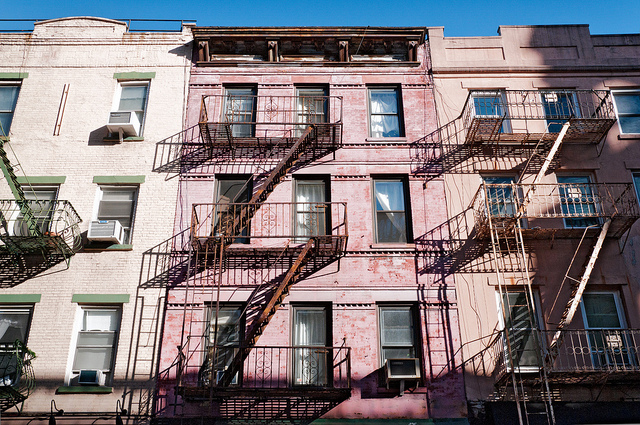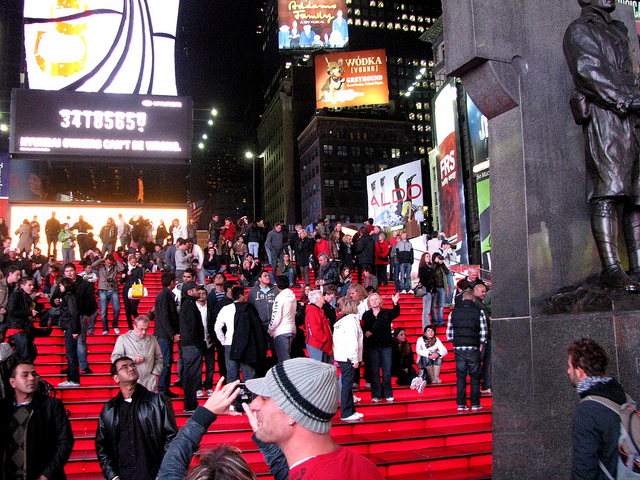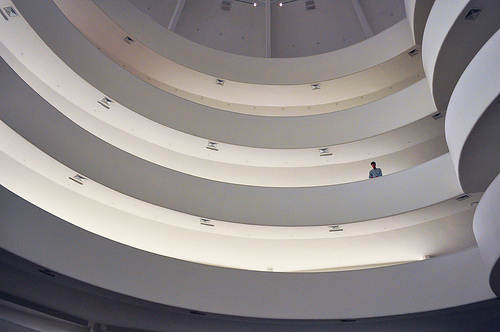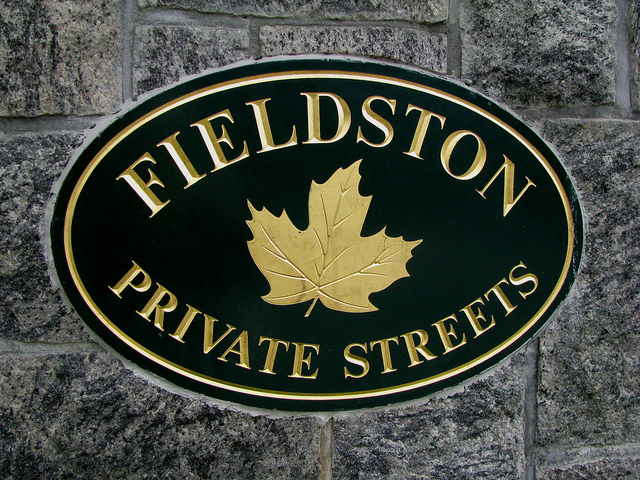My friend Linda had to leave early in the morning on October 18, 2010, so I was by myself again to explore the city. In the late morning I had planned a visit to the Lower East Side Tenement Museum, located in a five-story brick tenement building that was built in 1863. The Tenement Museum promotes tolerance and knowledge about the immigrant experience, and it does so with tours of the various apartments that are located at 97 Orchard Street, with each apartment telling the unique story of an immigrant family.
Guided by an enthusiastic and extremely knowledgeable volunteer by the name of Daryl Hamilton, we really started to get an idea of the conditions of poverty, crime and poor hygiene that afflicted 19th century immigrants. One building often housed 100 people or more. Latrines overflowing with human filth were located in the backyard, right next to the well where the residents had to get fresh water. The content of chamber pots and kitchen refuse would be raining down onto the streets and backyards. Before the invention of pasteurization and refrigeration, swill milk, obtained from cows fed on waste from distilleries and breweries, was sold on the street and made countless people sick.
The Moore family apartment illustrates the story of Irish immigrants who lived in this building for one year in 1869. The Tenement Museum uses objects to tell the story of the immigrant families that lived in the various apartments. An actual death certificate of April 20, 1869 attests to the death of the Moore family’s five month old daughter of malnutrition, likely caused by swill milk which lacked nutrients.
Daryl impressed the whole crowd with his extensive knowledge of 19th century history as well as details about the Lower East Side neighbourhood and the construction details of mid 19th century tenements. After our hour-long tour, the audience was truly impressed and left with a much better idea of the harsh living conditions that these immigrants were faced with.

At about 3 pm I got to use my Explorer Pass again, this time for a bicycle rental with Bike and Roll, a company that provides guided bicycle tours and rentals in various locations around New York City. I started riding southwards on the Hudson River Greenway, a paved recreational trail that is separated from road traffic. Passing by sites such as Battery Park City, Ground Zero, the Museum of Jewish Heritage, Robert F. Wagner Park I finally reached Battery Park at the tip of Manhattan. Then I cycled north next to the East River and made a brief stop at the South Street Seaport.
One of the most exciting portions of my ride were coming up: a ride across the East River on the Manhattan Bridge, followed by a ride back west on the famous Brooklyn Bridge, where I had to really pay attention not to run into any pedestrians because the bridge was packed with people walking. Then I crossed the city on Reade Street and cycled north on a bicycle lane on Hudson Street. Traffic was very light until I hit midtown and the area around the Lincoln Tunnel. Then I cycled back out to the Hudson River waterfront and went as far north as 96th Street. I was amazed at the wonderful cycling opportunities that New York City has to offer.

By 6 pm I returned my bicycle and took the M42 bus east to Grand Central Terminal, an imposing 1913 Beaux Arts masterpiece of railroad architecture. I enjoyed a casual dinner on the lower level Dining Concourse, one of the most convenient and affordable places to eat in Manhattan. With dinner taken care of, I took the subway to another architectural icon of New York City: Rockefeller Center, a complex of 19 commercial buildings that were built by Standard Oil heir John D. Rockefeller Jr. at the height of the Great Depression between 1930 and 1939.
The “Top of the Rock” experience highlights the construction as well as the historical and economic significance of this Art Deco landmark. Its construction employed tens of thousands of people at a time when jobs were in extremely short supply. After a thorough security check and after reading the extensive historical displays, I took the elevator up to the 67th floor, and another escalator to reach an outdoor viewing platform that provides an absolutely stunning 360 degree view of Manhattan.
Coming straight out of the building, I was mesmerized by the sight of the brightly illuminated Empire State Building and the lit-up spire of the Chrysler Building. A bit further to the west the bright neon lights of Times Square were blinking at me while to the east I was able to glimpse the illuminated arches of the Brooklyn Bridge. A second, even higher viewing platform at the very top of the building provided an even better view. That was the perfect ending for my last full day in New York City.





